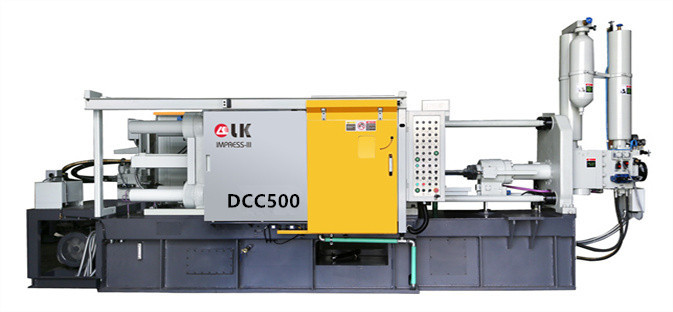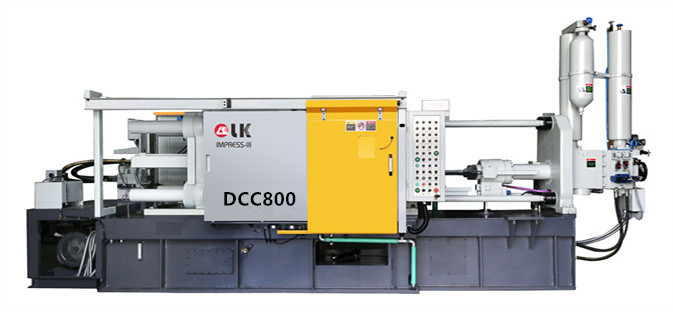What materials are used for die casting inserts
LK Die Casting Machine / 2024-07-05 15:54:18
Introduction
Die-casting inserts are important components widely used in modern manufacturing, and their material selection directly affects the service life of the mold,
production efficiency, and product quality.
This article will explore the various materials used for die-casting inserts in-depth, helping readers quickly understand how to choose the right insert material
so that they can make the best decision in practical applications.

Basic requirements for die-casting inserts
In order to meet production needs, die-casting insert materials need to have the following basic characteristics:
High strength and hardness: able to withstand high pressure and high-temperature conditions.
Excellent wear resistance: not easy to wear during use.
Good thermal stability: stable at high temperatures and no deformation.
High toughness: prevent cracking or breakage during use.
Excellent thermal conductivity: effective heat dissipation and reduced heat accumulation.
Common die-casting insert materials
1. Tool steel
Tool steel is the most commonly used die-casting insert material because of its high strength and hardness, excellent wear resistance, and good thermal stability.
Common tool steel grades include:
H13 steel: high strength, high toughness, high-temperature resistance, suitable for most die-casting applications.
SKD61 steel: similar to H13 steel, with excellent heat treatment performance and toughness.
D2 steel: high wear resistance, suitable for die-casting inserts that require high wear resistance.
2. Hot work die steel
Hot work dies steel is particularly suitable for high-temperature working environments, with high-temperature strength, thermal fatigue resistance, and toughness.
Common hot work die steel grades include:
H11 steel: high-temperature strength and toughness, suitable for high temperature and high pressure die casting environment.
H21 steel: has good strength and thermal fatigue resistance at high temperatures, suitable for continuous high-temperature operation.
3. Beryllium copper alloy
Beryllium copper alloy has excellent thermal conductivity and corrosion resistance, which is very suitable for use in die-casting inserts:
C17200: high thermal conductivity and hardness, suitable for die-casting inserts with complex shapes and small parts.
C17510: good thermal conductivity and wear resistance, suitable for occasions requiring high heat dissipation and high wear resistance.
4. Tungsten carbide
Tungsten carbide has extremely high hardness and wear resistance, and is an ideal material for high-demand die-casting inserts:
Tungsten carbide composite materials: Tungsten carbide particles are embedded in a metal matrix, which has both high hardness and toughness and is suitable for die-
casting inserts with extremely high wear resistance requirements.
5. Ceramic materials
Ceramic materials are also gradually used in die-casting inserts due to their high hardness, wear resistance and high-temperature resistance:
Zirconium oxide ceramics: high strength, high hardness, and excellent wear resistance, suitable for high temperature and high-pressure environments.
Silicon nitride ceramics: good high-temperature resistance and wear resistance, suitable for special high-temperature working environments.
Factors affecting material selection
When selecting die-casting insert materials, the following factors need to be considered comprehensively:
Mold life: The wear resistance and fatigue resistance of the material will affect the service life of the mold.
Production cost: The material cost and processing cost need to be balanced, and choosing the right material can reduce the total production cost.
Product quality: Material performance directly affects the quality of the final product.
Production efficiency: Materials with high thermal conductivity help improve production efficiency and reduce production cycles.
Analysis of the advantages and disadvantages of various materials
Tool steel
Advantages: high strength and hardness, excellent wear resistance, good heat treatment performance.
Disadvantages: easy to produce thermal fatigue in extremely high-temperature environments, and regular maintenance and replacement are required.
Hot working die steel
Advantages: high-temperature strength and toughness, good thermal fatigue resistance.
Disadvantages: high processing cost, professional heat treatment process is required.
Beryllium copper alloy
Advantages: excellent thermal conductivity and corrosion resistance, good hardness.
Disadvantages: high cost, professional processing equipment is required.
Tungsten carbide
Advantages: extremely high hardness and wear resistance.
Disadvantages: large brittleness, high processing difficulty, high cost.
Ceramic materials
Advantages: high hardness, wear resistance, and high-temperature resistance.
Disadvantages: large brittleness, easy to break, high cost, high processing difficulty.

Material selection in practical applications
In practical applications, different die castings have different requirements for inserting materials. The following are several typical application scenarios and
material selection recommendations:
1. Automotive parts die casting
Automotive parts usually require high strength, high wear resistance, and high precision, and are suitable for tool steel or hot work die steel, such as H13 or H11 steel.
2. Electronic product housing die casting
Electronic product housings require good thermal conductivity and high precision and are suitable for beryllium copper alloys, such as C17200.
3. High temperature and high-pressure environment die casting
Under high temperature and high-pressure environments, inserts are required to have extremely high-temperature resistance and wear resistance and are suitable for
tungsten carbide or ceramic materials, such as zirconium oxide ceramics.
Development trend of die-casting insert materials
With the advancement of science and technology, die-casting insert materials are also developing continuously. Future development trends include:
New alloy materials: Research and develop new alloy materials that are more resistant to high temperature and wear, and improve insert performance and life.
Composite materials: Combine the advantages of multiple materials to develop high-performance composite materials to further improve insert performance.
Surface treatment technology: Through advanced surface treatment technology, the surface hardness and wear resistance of the inserts are improved, and the service
life is extended.
Intelligent materials: Develop intelligent materials with self-repairing and self-adaptive capabilities to improve the performance and reliability of the inserts.
Conclusion
The material selection of die-casting inserts is crucial to the success of the die-casting process. Tool steel, hot work die steel, beryllium copper alloy,
tungsten carbide and ceramic materials are common insert materials, each of which has unique properties and is suitable for different application scenarios.
By rationally selecting and applying these materials, the service life and production efficiency of the inserts can be effectively improved, ensuring high
quality of the final product.
In the future, with the continuous development of new materials and technologies, the performance of die-casting inserts will be further improved, bringing more
innovations and breakthroughs in the manufacturing industry.
Contact LK Egypt to learn more info about the die-casting machine
LKAGENT OFFICE DCM
Address: Industry Zone, South of Port Said Kebly, Egypt
https://www.zazdiecasting.com/
Phone: +86 13598704163
Mobile: +20 101 304 3317 +20 150 181 8310
Email: jack@zazmae.com ahmedmahmoud@zazmae.com
#die cast tooling
#trivalent chromate
#rapid prototype casting
#a360 aluminum
#aluminum caster
#aluminum prototype
#ideal 55 slider parts
#density of aluminum kg/mm3
#magnesium sheet metal
#parts of a metal gate
#subcontracting of screw machining for the luxury sector
#wall aluminum
#die casting tooling
#tooling for die casting
#density of aluminium in kg mm3
#clear chromate
#es casting metals
#gating material
#prototype aluminum
#sigma castings
#subcontracting of screw-machining for household appliances
#we squeeze to please machine
#aluminium gravity die casting
#aluminum part
#aluminum rapid prototyping
#nickel casting
#plunger tip for die casting machine
#rapid prototyping aluminium
OTHER CONTENT
-

2024-09-19 14:16:15 LK Cold Chamber Die Casting Machine DCC900 Locking Force: 9000KN Die Height: 400-1000mm Space Between Tie Bars: 930x930mm Shot Weight: 13.5Kg Casting Area Max:2250c㎡
More -

2024-09-19 14:11:06 LK Cold Chamber Die Casting Machine DCC280 Locking Force: 2800KN Die Height: 250-650mm Space Between Tie Bars: 560x560mm Shot Weight: 2.9Kg Casting Area Max:700c㎡
More -

2024-09-19 10:23:07 LK Cold Chamber Die Casting Machine DCC580 Locking Force: 5000KN Die Heigh: 350-850mm Space Between Tie Bars: 760x760mm Shot Weight: 6.9Kg Casting Area Max:1250c㎡
More -

2024-09-19 10:11:20 LK Cold Chamber Die Casting Machine DCC400 Locking Force: 4000KN Die Height: 300-700mm Space Between Tie Bars: 669x669mm Shot Weight: 4.7Kg Casting Area Max:1000c㎡
More

